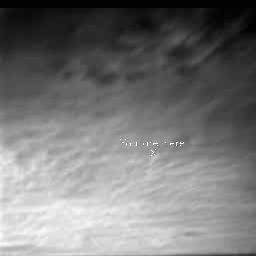This is the first image showing clouds of Mars taken from the lander.
Click on image for full size
Image from: JPL/NASA
Weather found by Mars Pathfinder
This is the first image showing clouds of Mars taken from the lander. Ground based viewing of Mars has shown that clouds seem to be plentiful only in the middle latitudes This may be because water of Mars may only be found at equatorial regions.
As early as 1796 scientists were reporting "yellow", and "white" or "bluish" clouds in the Martian atmosphere. With data from the Mariner 9 mission, scientists could finally prove that the clouds were made of water. It is known that there are weather patterns on Mars which resemble terrestrial storms. It is not known whether rain comes from these storms however!
Mars Pathfinder set out to record the same kind of temperature and pressure data which is used to diagnose the weather on Earth. Mars Pathfinder also recorded cloud patterns for study later. Some of these can be viewed in the Image Archive below.
Mars Pathfinder found the weather on Mars to be variable. There were light winds (16-35 km/hr - compare these speeds with those on the Earth), gusting both at night and during the day. Cold morning air was warmed by the surface and convected upward in small eddies. Afternoon temperatures were steady, with no evidence of eddy formation. The early afternoons were plagued by dust devils, which were repeatedly seen. Martian Global Dust Storms are considered to germinnate from dust devils such as these.
You might also be interested in:
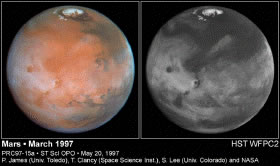
Unlike the Earth, where clouds are found around the entire globe, on Mars, clouds seem to be plentiful only in the middle latitudes, as shown in this Hubble telescope image. This may be because water of
...more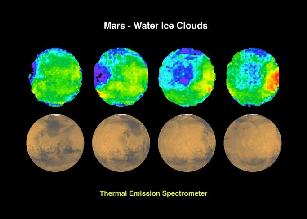
This graph, taken by Mars Global Surveyor, shows proof that the clouds of Mars are made of water. The sequence shows the water clouds moving across the face of Mars. The Mariner 9 mission was the first
...more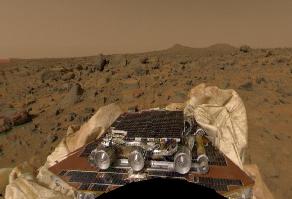
The Mars Pathfinder (MPF) mission was sent to investigate the geology of Mars. Its principal objective was to analyze the rocks and soil of Mars. The MPF consisted of 2 components, a lander and a mobile
...more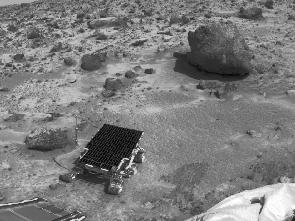
These are the findings of Mars Pathfinder. High Silica Rocks - a result from chemical analysis of the Martian rocks. suggestive of differentiated (evolved) rocks and minerals. helps establish that, like
...more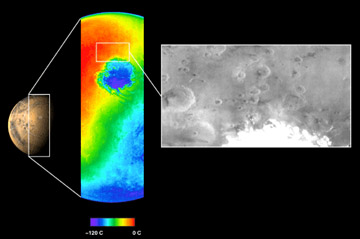
The Mars Odyssey was launched April 7, 2001, from Cape Canaveral Air Force Station in Florida. After a six-month, 285 million-mile journey, the Odyssey arrived at Mars on October 24, 2001 (02:30 Universal
...more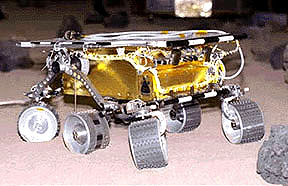
The Mars 2005 mission is still in the planning stages. It is set to launch in the year 2005.
...more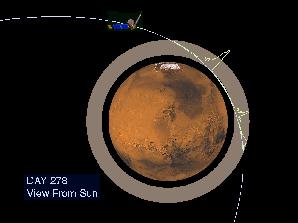
On September 12, 1997, the Mars Global Surveyor successfully entered a highly elliptical orbit around Mars. To get into the near-circular, near-polar, low-altitude orbit necessary to map the surface of
...more


